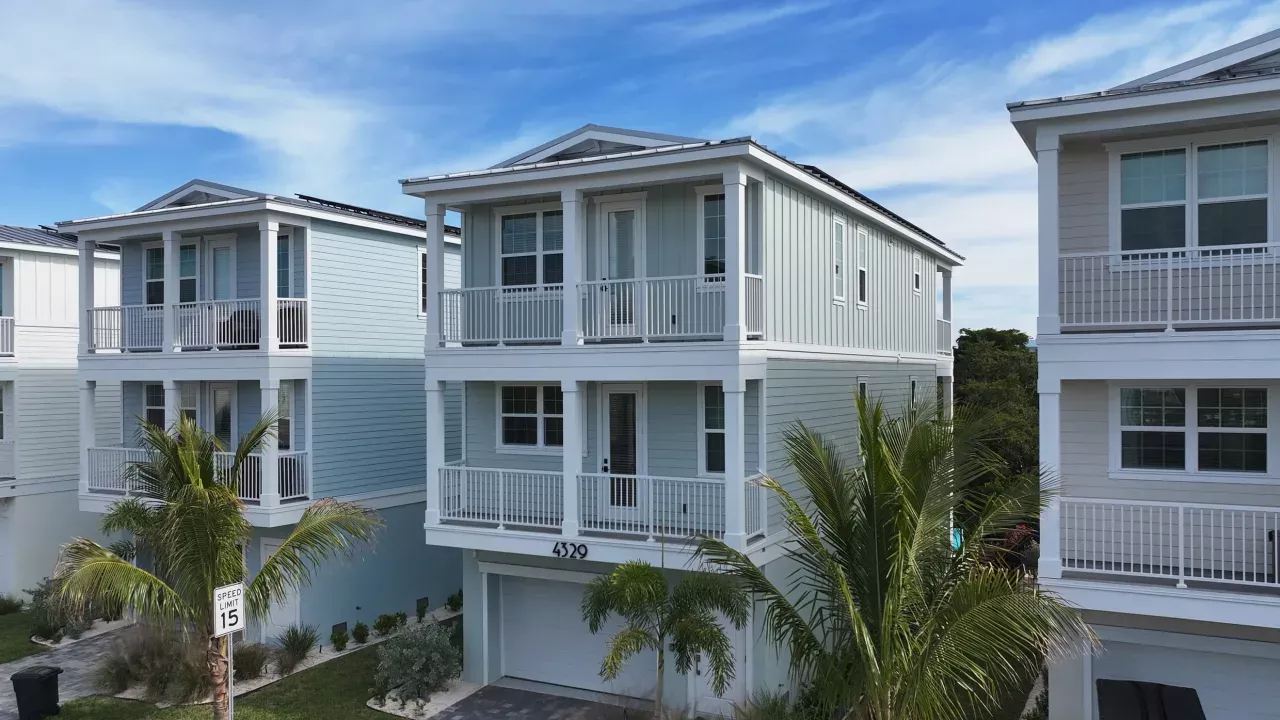Last Thursday, when Hurricane Helene hit the small town of Cortez, Florida—about four hours south of the eye of the storm—a storm surge filled the streets with waist-deep water near a new development. The grid lost power. But the new homes stayed dry and kept the lights on.
The development, called Hunters Point, was designed to be as hurricane-proof as possible. Since the first residents moved in, in 2022, the homes have survived three major hurricanes: Hurricane Ian, Hurricane Idalia, and now Helene. The project is still under construction, with 31 homes complete out of 86 that will eventually be there.
When the design process started, “hurricanes were our number one priority,” says Marshall Gobuty, founder and president of Pearl Homes, the developer that built the community. “How could we build to survive a Cat 5 hurricane?’
The team spent 18 months testing and tweaking the design of the first home inside a warehouse before beginning development. Steel straps connect each floor together for strength; the first floor is made of solid concrete. Inside the walls, the builders used two-by-six lumber for framing rather than standard two-by-fours, and the gaps are filled with hard foam insulation, adding more strength while making the home more energy efficient. The roof is made of steel with raised vertical seams; solar panels are connected to the seams. (On a normal roof, solar panels can fly off during a storm, but this design means that wind can’t flow underneath and rip them off.)
The solar panels are connected to batteries at each home for backup power. When they’re in emergency mode, the batteries stay charged at 100% in case the grid goes down. On Thursday evening, when the power went out, the homes at Hunters Point automatically switched to battery power. On Friday morning, when the sun came out again, the power was still off, but the batteries started charging from the solar panels on the roof.
In tests on the first prototype home, the developers found that even if the sun didn’t come out, the battery could keep limited power running in the house for as long as 10 days. The homes’ ultra-efficient design also helps conserve power. With regular power use, the batteries could still work for as long as six days. In sunny weather, the solar panels can keep the batteries going longer. (When the grid is running normally, the solar panels still produce more energy than the houses need, so homeowners don’t have to pay electric bills.)
Because the homes sit in a flood zone, the development had to be elevated to meet building codes. The new roads by the homes are also raised. But the team decided to go farther. “When you step into the first floor over the garage, you are 16 feet above the flood zone,” says Gobuty. To meet requirements, the project needed to use three feet of fill dirt. They used seven feet instead.
Between the homes, swales are designed to carry water to a retention system. When the storm surge hit during Helene, water quickly rose. “We saw that Cortez Road, which is in front of us, was starting to go underwater,” says Dave Randall, one of the homeowners. “It was more like a river out there. Then you start thinking, well, I wonder if we’re going to start getting water in here.”
The retention system worked as intended, filling up a pond with seven feet of water that quickly subsided in the morning. While the flooding came within a few feet of the Randalls’ back patio, and around six feet from the garage door, the water ultimately stayed away from the homes. If a future storm went further, with the garage on the first level, the main part of the house would still stay dry.
The sustainability features of the homes add to the cost, and the houses aren’t cheap, selling for $1,250,000 and up. But Gobuty argues that the approach should be a model for new development in hurricane-prone areas, and he’s incorporating some of the ideas into less expensive rental homes.
Because of the resilience of the design, insurance companies are willing to cover the properties—at the same time that some insurers are fleeing from Florida’s increasing disasters. “I was on the phone with our insurance company this morning, and let them know I’m sending pictures, everything’s great,” Gobuty says. “She said, ‘Finally, [some] good news.’ Insurance is a big, big component in the future, because climate change is here. And we have to adapt.”













